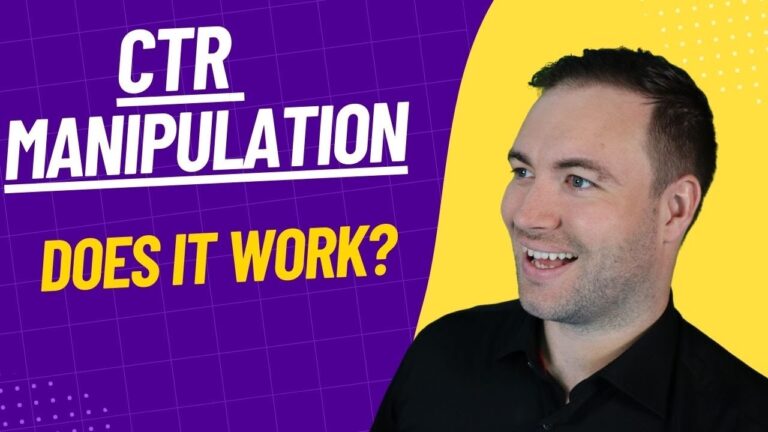Supercharge Your Link Building Efforts with LinkDaddy CTR Manipulation Proficiency
Supercharge Your Link Building Efforts with LinkDaddy CTR Manipulation Proficiency
Blog Article
Enhancing Organic Click-Through Fees With CTR Manipulation
The optimization of organic click-through prices (CTR) is a nuanced endeavor that hinges on understanding both user psychology and reliable web content presentation. The landscape is raging with mistaken beliefs and oversimplifications concerning what genuinely drives CTR.
Comprehending Click-Through Fees
Recognizing click-through rates (CTR) is crucial for reviewing the efficiency of internet marketing techniques. CTR measures the percentage of individuals who click a specific web link or ad compared to the total number of customers who see it. A higher CTR shows that the content is engaging and pertinent to the target market, while a lower CTR might indicate a requirement for optimization.
To compute CTR, separate the number of clicks by the number of impacts and multiply by 100. For example, if an advertisement gets 300 clicks out of 10,000 perceptions, the CTR would certainly be 3%. This statistics is vital for analyzing different components of digital advertising, including seo (SEO), e-mail campaigns, and social media sites advertising and marketing.
Moreover, examining CTR assists marketers identify which strategies produce the very best results and which call for improvement. By concentrating on boosting CTR, services can enhance their material's presence and effectiveness, resulting in boosted website traffic and potential conversions. Comprehending the nuances of CTR is fundamental for any marketer aiming to enhance their on-line existence and take full advantage of roi (ROI)

The Psychology of User Actions
Individual actions is dramatically influenced by emotional factors that dictate how individuals interact with on the internet web content. Understanding these variables is necessary for enhancing click-through rates (CTR) in organic search results.
Emotional actions also significantly impact user habits. Material that reverberates psychologically can set off a sense of seriousness or interest, motivating customers to click. In addition, social proof-- such as individual reviews or ratings-- can improve count on and urge involvement, as individuals frequently look to the habits of others to inform their very own choices.
Moreover, the principle of scarcity can drive clicks - CTR Manipulation Press Release. Limited-time deals or unique material produce an anxiety of missing out (FOMO), compelling individuals to act swiftly. Understanding these psychological motorists allows online marketers to produce more engaging content that reverberates with their target market
Reliable CTR Adjustment Methods
Leveraging emotional understandings can dramatically boost click-through rates (CTR) via targeted adjustment strategies. Among one of the most reliable methods is making use of compelling headings that evoke inquisitiveness or seriousness. Wording titles as questions or integrating numbers can attract even more focus, prompting users to click.
Another strategy involves maximizing meta descriptions to produce a feeling of importance and immediacy. By plainly laying out the advantages or official site remedies supplied in the material, you can involve prospective readers and convince them to click. Additionally, utilizing power words-- such as "unique," "shown," or "free"-- can improve the appeal of your content.
Aesthetic components also play a crucial role. Incorporating captivating images or thumbnails can draw customers in and improve CTR. A/B screening different visuals can help determine which images reverberate best with your target market.
Finally, making sure that your material guarantees deliverable value results in higher CTR. When users perceive that clicking will provide them with purposeful understandings or solutions, they are extra likely to engage. By using these techniques thoughtfully, marketing experts can efficiently adjust CTR to their benefit while keeping honest requirements.
Common Myths Regarding CTR
A number of false impressions border click-through rates (CTR) that can lead online marketers to make misdirected choices. While a high CTR recommends that even more customers are clicking, it does not assure sales or conversions.
An additional usual idea is that CTR is a separated metric. In truth, CTR should be evaluated in conjunction with other performance indicators, such as bounce price and conversion price, to get an alternative sight of project success.
In addition, some marketing experts think that enhancing for CTR alone is adequate. Concentrating solely on CTR can lead to clickbait strategies that may draw in clicks yet stop working to engage customers meaningfully. GMB CTR Manipulation. This method can damage brand online reputation and cause reduced retention rates
Lastly, there is an idea that CTR strategies are universally efficient. The truth is that optimum CTR strategies can differ substantially across sectors and target audiences, demanding tailored techniques for different market sections. Understanding these myths is crucial useful content for establishing effective CTR methods that straighten with overarching advertising objectives.
Determining CTR Success
Although high click-through prices (CTR) can indicate successful interaction with web content, measuring their true success calls for an extensive evaluation of numerous elements. It is site important to comprehend the context in which the CTR is attained. A high CTR on a misleading title might not convert to purposeful engagement or conversions, eventually showing inadequately on the brand name's credibility.
Second, assessing the resource of web traffic is critical. Organic traffic from search engines can represent a robust material technique, while clicks from pointless resources might show an absence of targeting. Additionally, measuring the succeeding customer behavior is vital; analyzing metrics such as bounce price, time invested on web page, and conversion prices can give much deeper understandings right into the top quality of the interaction launched by the CTR.
.svg)
Conclusion

The optimization of organic click-through prices (CTR) is a nuanced venture that pivots on comprehending both user psychology and reliable content presentation. CTR gauges the portion of customers who click on a specific web link or advertisement contrasted to the total number of individuals that see it. A greater CTR indicates that the material is engaging and appropriate to the target audience, while a reduced CTR may indicate a need for optimization.
Focusing specifically on CTR can lead to clickbait strategies that might attract clicks however fail to engage customers meaningfully. Additionally, gauging the subsequent individual actions is important; analyzing metrics such as bounce rate, time invested on page, and conversion prices can provide much deeper understandings into the high quality of the involvement started by the CTR.
Report this page